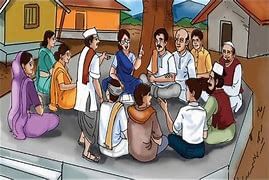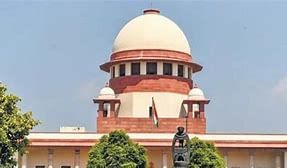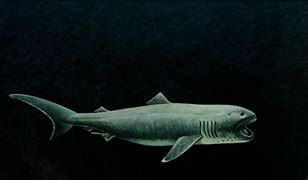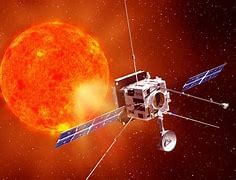UPSC Daily Current Affairs- 7th December 2023 | Current Affairs & Hindu Analysis: Daily, Weekly & Monthly PDF Download
| Table of contents |

|
| ‘Group of Companies’ Doctrine |

|
| Gram Manchitra application |

|
| Electoral bonds |

|
| Deepfakes |

|
| Megamouth Shark |

|
| Solar Orbiter |

|
| Chandrayaan-3 Propulsion Module retraces Steps to Earth Orbit |

|
GS-II
‘Group of Companies’ Doctrine
Subject: Polity and Governance

Why in news?
A Constitution Bench of the Supreme Court recently held that an arbitration agreement can bind non-signatories as per the "group of companies" doctrine.
About ‘Group of Companies’ Doctrine:
- The "group of companies" doctrine states that a company that is a non-signatory to an arbitration agreement would be bound by the agreement if such a company is a member of the same group of companies that signed the agreement.
- The doctrine deems that the parties to the arbitration agreement mutually intended for such a non-signatory to be bound by it.
- Arbitration is a mechanism to resolve disputes between parties without going to court. A neutral person is appointed to adjudicate the dispute, and the judgement of an arbitrator is legally enforceable.
- The "group of companies" concept, unlike other non-signatory theories that are based on domestic law principles, is based on international arbitration jurisprudence.
- The doctrine was first recognised by the Indian Supreme Court in Chloro Controls India Private Limited v. Severn Trent Water Purification Inc. (2013). Since then, Indian courts have applied the doctrine to bind group companies of signatories to arbitration agreements.
- The Supreme Court in ONGC Ltd. vs. Discovery Enterprises (P) Ltd. came up with certain factors to be considered in order to decide whether the Doctrine would find application or not, being:
- the mutual intent of the parties
- the relationship of a non-signatory to a party which is a signatory to the agreement
- the commonality of the subject-matter
- the composite nature of the transaction
- the performance of the contract
- The main purpose behind bringing the 'group of companies' doctrine in India was to prevent fragmentation of disputes in composite transactionse., disputes consisting of several parties and multiple contracts.
- Recent Supreme Court Ruling:
- The Court held that it is not necessary that only persons who are signatories to the arbitration agreement will be bound by the arbitration agreement.
- The requirement of a written arbitration agreement does not mean that non-signatories will not be bound by it, provided there is a defined legal relationship between the signatories and the non-signatories and that the parties intended to be bound by it by the act of conduct.
- Non-signatories, by virtue of their relationship with the signatory parties and their commercial involvement in the subject matter, are not total strangers to the arbitration agreement.
Source: Live Law
Gram Manchitra application
Subject: Government Initatives

Why in news?
Recently, the Panchayati Raj Ministry Launched the “Gram Manchitra” App.
Background:-
- This information regarding the “Gram Manchitra” App was given by the Union Minister of State for Panchayati Raj, Shri Kapil Moreshwar Patil in a written reply in Lok Sabha.
About Gram Manchitra application:-
- Launched: October 2019.
- Ministry: Ministry of Panchayati Raj
- Objectives: to encourage Spatial Planning by the Gram Panchayat.
Salient Features:-
- The Geographic Information System (GIS) application “Gram Manchitra” (https://grammanchitra.gov.in) facilitates and supports Gram Panchayats to perform planning at the Gram Panchayat level using geospatial technology.
- A geographic information system (GIS) is an online system that analyses and displays geographically referenced information.
- It uses data that is attached to a unique location.
- Gram Manchitra provides a single/ unified Geo-Spatial platform to better visualize the various developmental works to be taken up across the different sectors and provide a decision support system for the Gram Panchayat Development Plan (GPDP).
- Complementing “Gram Manchitra,” the Ministry has introduced “mActionSoft,” a mobile-based solution designed to capture photos with Geo-Tags, incorporating GPS coordinates. ( Bharat Net Project)
- This feature facilitates the geo-tagging of assets at three crucial stages: before the commencement of work, during the work, and upon completion.
- The resulting repository of information encompasses various sectors such as natural resource management, water harvesting, sanitation, agriculture, check dams, and irrigation channels.
- The assets geo-tagged using the “mActionSoft” application seamlessly integrate with “Gram Manchitra,” offering an enhanced visualization of developmental works in Gram Panchayats.
- This integration ensures transparency and accessibility of information related to assets created under finance commission funds.
- This application is also linked with the Socio-Economic Caste Census (SECC) report and Mission Antyodaya.
- All this information is available in a single window, which will assist the Gram Panchayat user in better visualization of works during planning.
- Real-time monitoring of activities or development work implementation status and progress of execution of various schemes can be easily tracked.
Benefits:-
- Gram Manchitra provides several planning tools that use GIS technology to help Gram Panchayat officials develop realistic and achievable development plans.
- These tools provide a decision support system in the preparation of development plans viz. tools for identifying potential sites for development projects, asset tracking, estimating the costs of projects, and assessing the impact of projects.
- It will help Gram Panchayat officials develop realistic and achievable development plans.
Source: PIB
Electoral bonds
Subject: Polity

Why in News?
Political funding through anonymous electoral bonds shot up by over 400% during the recent Assembly elections in Telangana, Rajasthan, Madhya Pradesh, Chhattisgarh and Mizoram, as compared to the last polls in these states in 2018.
Background:-
- The latest sales (29th tranche) under the electoral bond scheme saw the highest sales in Telangana’s capital of Hyderabad (Rs 359 crore), followed by Mumbai (Rs 259.30 crore), and Delhi (Rs 182.75 crore).
About Electoral bonds:-
- An Electoral Bond is like a promissory note that may be purchased by a person who is a citizen of India or incorporated or established in India.
- A person being an individual can buy Electoral Bonds, either singly or jointly with other individuals.
- The bonds are like banknotes that are payable to the bearer on demand and are interest-free.
Historical Background:-
- The electoral bonds system was introduced in 2017 by way of a Finance bill.
- It was implemented in 2018.
Salient Features:-
- Electoral Bonds serve as a means for individuals and entities to make donations to registered political parties while maintaining donor anonymity.
- State Bank of India (SBI) issues the bonds in denominations of Rs 1,000, Rs 10,000, Rs 1 lakh, Rs 10 lakh, and Rs 1 crore.
- It is payable to the bearer on demand and interest-free.
- It is purchased by Indian citizens or entities established in India.
- It can be bought individually or jointly with other individuals.
- It is valid for 15 calendar days from the date of issue.
- The State Bank of India (SBI) is the authorized issuer.
- Electoral Bonds are issued through designated SBI branches.
- Electoral Bonds can be purchased digitally or through cheques.
- Encashment only through an authorized bank account of the political party.
- Political Parties must disclose their bank account with the Election Commission of India (ECI).
Eligibility:-
- Only the Political Parties registered under Section 29A of the Representation of the People Act (RPA), 1951 and which secured not less than one per cent of the votes polled in the last General Election to the House of the People or the Legislative Assembly of the State, shall be eligible to receive the Electoral Bonds.
Advantages of Electoral Bonds:-
- Ensures Accountability: Donations through Electoral Bonds will only be credited to the party bank account disclosed with the ECI.
- Discourage Cash: The Purchase will be possible only through a limited number of notified banks and that too through cheque and digital payments.
- More Transparency: It helps the political parties to operate in a more transparent manner with the election commission, regulatory authorities and the general public at large.
- Maintains Anonymity: The individuals, groups of individuals, NGOs, religious and other trusts are permitted to donate via electoral bonds without disclosing their details. Therefore, the identity of the donor is being preserved.
Disadvantages of Electoral Bonds:-
- Hindering Right to Know: Voters will not know which individual, company, or organisation has funded which party, and to what extent. Before the introduction of electoral bonds, political parties had to disclose details of all their donors, who have donated more than Rs 20,000.
- The change infringes the citizen’s ‘Right to Know’ and makes the political class even more unaccountable.
- Unauthorized Donations: In a situation where the contribution received through electoral bonds is not reported, it cannot be ascertained whether the political party has taken any donation in violation of provision under Section 29B of the RPA, 1951 which prohibits the political parties from taking donations from government companies and foreign sources.
- Leads to Crony-Capitalism: It could become a convenient channel for businesses to round-trip their cash parked in tax havens to political parties for a favour or advantage granted in return for something.
- Anonymous funding might lead to an infusion of black money.
Source: Indian Express
GS-III
Deepfakes
Subject: Science and Technology

Why in News?
Recently, the Government reviewed social network progress in curbing deepfakes.
Background:-
- Union Minister Rajeev Chandrasekhar met social media platforms to review progress made by them in tackling misinformation and deepfakes and asserted that advisories will be issued in the next two days to ensure 100 per cent compliance by platforms.
About Deepfakes:-
- The term deepfake originated in 2017, when an anonymous Reddit user called himself “Deepfakes.”
- The term deepfake refers to digital representations (video and images), which are produced by artificial intelligence to replace the person in the original video with someone else.
- It is a method for manipulating videos, images, and audio utilizing powerful computers and deep learning.
- It is used to generate fake news and commit financial fraud among other wrongdoings.
- The algorithms of deepfake are intelligent enough to make decisions on their own.
- Deepfake technology employs sophisticated deep learning algorithms, particularly Generative Adversarial Networks (GANs) and autoencoder models, to analyze and synthesize realistic human faces, voices, and gestures.
- By analyzing large datasets of images and videos, deepfake algorithms learn to mimic facial expressions, speech patterns, and other human characteristics, enabling the creation of convincing and deceptive digital content.
Applications:-
- Entertainment Industry: Deepfake technology has found applications in the entertainment industry, enabling the creation of engaging visual effects, digital doubles, and realistic character animations in movies and video games.
- Social Media and Misinformation: The proliferation of deepfake content on social media platforms has amplified concerns about the spread of misinformation, as manipulated videos and audio recordings can deceive the public and influence public opinion.
- Cybersecurity Threats: Deepfakes pose significant cybersecurity threats, as malicious actors can utilize this technology for identity theft, impersonation, and fraud, jeopardizing the security and privacy of individuals and organizations.
- Political Manipulation and Disinformation: The potential use of deepfake technology for political manipulation and disinformation campaigns raises concerns about the integrity of democratic processes and public trust in political institutions.
Challenges:-
- Deepfake technology has raised concerns due to its potential misuse, posing significant challenges to various aspects of society.
- It has gained widespread attention for its applications in fake news, hoaxes, celebrity pornography, and identity theft.
India’s Current Stand on Deepfakes:-
- India lacks a comprehensive legal framework dedicated to regulating deepfakes.
- India relies on pre-existing laws, such as Sections 67 and 67A of the Information Technology Act (2000), which may be applicable to some aspects of deepfakes, including defamation and explicit material dissemination.
- Defamation Provision: Section 500 of the Indian Penal Code (1860) offers punishment for defamation, which can be applied in cases involving deepfakes.
- Personal Data Protection Bill (2022): Although this bill might provide some protection against the misuse of personal data, it doesn’t explicitly address the issue of deepfakes
Source: Indian Express
Megamouth Shark
Subject: Enivronment

Why in News?
A pregnant megamouth shark, a rare and elusive deepwater species, was recently discovered washed up on a beach in the Philippines.
About Megamouth Shark:
- It is an extremely rare and unusual species of deep-water shark.
- Scientific Name: Megachasma pelagios.
- Distribution:
- Their range is believed to span the region between latitudes 40°N and 40°S.
- These sharks inhabit the Atlantic, Indian, and Pacific oceans.
- Habitat: They are found in deep, warm oceanic water.
- This species has only been observed in the wild a few times, and less than 60 individuals are known by scientists to have ever been captured or observed.
- Features:
- It is a large species, reaching weights of 2700 pounds (1215 kg).
- They are typically 425-515 cm long. Females are larger than males.
- They are easily recognised by their huge, soft head and large mouth, which is positioned at the anterior margin of the head.
- The colour varies from grey to blueish-black above and is pale grey below.
- They have a series of small, hooked teeth along their top and bottom jaws.
- They are filter feeders, and they swim with their mouths constantly wide open in order to filter out their preferred planktonic prey.
- The inside of their mouths is covered with light-producing organs that may be used to attract pelagic crustaceans and other potential prey.
- Conservation Status:
- IUCN Red List: Least Concern
Source: AIR
Solar Orbiter
Subject: Science and Technology

Why in News?
The European Space Agency's Solar Orbiter recently captured the most detailed image of the Sun's full disc and outer atmosphere, the corona, to date.
About Solar Orbiter:
- It is a Sun-observing satellite with 10 science instruments, all designed to provide unprecedented insight into how the sun works.
- It is conceived to perform a close-up study of our Sun and inner heliosphere-the uncharted innermost regions of our Solar System.
- It is a joint mission of the European Space Agency (ESA) and NASA.
- It is the most complex scientific laboratory ever to have been sent to the Sun.
- It will take images of the Sun from closer than any spacecraft before and, for the first time, look at its uncharted polar regions.
- The mission, launched on February 10, 2020, released its first images in June of that year.
- After multiple gravitational assist manoeuvres at Earth and Venus, it started its full science operations in December 2021.
- It follows an elliptical orbit around the sun, with the closest point, the perihelion, at about 25 million miles (40 million kilometres) from the sun, which is closer than the orbit of Mercury.
- Instruments: It carries six remote-sensing instruments to observe the Sun and the solar corona and four in-situ instruments to measure the solar wind, energetic particles, and electromagnetic fields.
- The mission is scheduled to last until at least 2027.
Source: India Today
Chandrayaan-3 Propulsion Module retraces Steps to Earth Orbit
Subject: Science and Technology
Why in News?
The Propulsion Module (PM) of Chandrayaan-3 successfully returned to Earth’s orbit, marking a significant step in lunar exploration.
- This maneuvers was not part of the original mission plan but capitalized on the mission’s logistical advantages, including excess fuel.
- Difference from Chandrayaan-2: Unlike Chandrayaan-2, which had a full-fledged orbiter, Chandrayaan-3 featured a lighter PM solely for lunar transit.
- Communication: The mission utilized the Chandrayaan-2 orbiter for Earth communications.
- Payload: The PM carried the Spectro Polarimetry of Habitable Planet Earth (SHAPE) instrument, aimed at studying Earth to identify habitable exoplanets.
- Separation and Operation: The PM separated from the lander on August 17 and was initially expected to orbit the Moon for six months with SHAPE operational.
- Extended Mission Life: The precise orbit injection and efficient maneuvers led to over 100 kg of fuel savings, extending the PM’s operational life.
- Adapted Mission Plan: This fuel surplus allowed ISRO to demonstrate capabilities for future lunar sample return missions.
- Manoeuvres Planning: ISRO designed an optimal Earth return trajectory for October 2023.
- Execution: The PM underwent a series of maneuvers, including orbit elevation around the Moon and a Trans-Earth injection, followed by Moon fly-bys before exiting the Moon’s sphere of influence.
- Current Status: The PM is now in an Earth orbit with a period of nearly 13 days, operating safely without posing threats to other satellites.
- Trajectory and Maneuver Execution: The mission provided insights into planning and executing trajectories for small spacecraft to return from the Moon to Earth.
- Software Development: This experience will aid in developing software modules for future mission planning.
- Gravity-Assisted Flybys: The experiment paves the way for planning gravity-assisted flybys across celestial bodies.
- End-of-Life Management: It also helps in avoiding uncontrolled crashes on the Moon’s surface at the end of the PM’s life.
- SHAPE Payload: SHAPE continues to operate, including during a special operation on October 28 during a Solar Eclipse, and will remain active when Earth is in its field of view.
Source: The Hindu
|
38 videos|5288 docs|1117 tests
|
FAQs on UPSC Daily Current Affairs- 7th December 2023 - Current Affairs & Hindu Analysis: Daily, Weekly & Monthly
| 1. What is the 'Group of Companies' Doctrine? |  |
| 2. What is the Gram Manchitra application? |  |
| 3. What are electoral bonds? |  |
| 4. What are deepfakes? |  |
| 5. What is the Solar Orbiter? |  |















